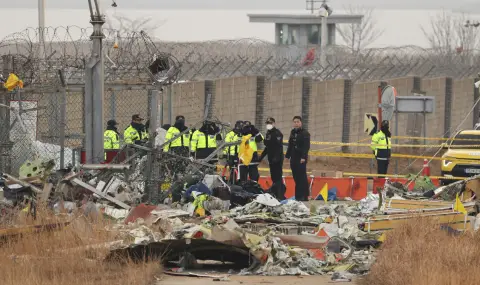The fuel jettisoning function during flight is not available on Boeing 737-800 aircraft, one of which crashed at the South Korean airport Muan on December 29.
The scale of the fire on the plane after hitting a structure at the end of the runway would not have been so great if there had been less fuel in the tanks. “There is a lot of talk about fuel; there are questions about why the plane did not dump fuel before landing. Because the Boeing 737-800, as a rule, does not have a built-in method for jettisoning fuel overboard“, said Prof. Ahn Yong-tae of Geuktong University's Department of Aviation.
“In this case, there is no other option but to hover in the air while using up fuel“, he continued. When an emergency landing is necessary, planes try to jettison fuel to reduce their weight and minimize the risk of fire. Planes have a maximum allowable landing weight.
News1 agency suggests that the pilot did not have time to use up fuel. According to the Hanguk Ilbo newspaper, at 08:54 local time, the plane received landing clearance and was approaching the runway. Three minutes later, controllers warned of a bird strike. At 08:59 local time, the pilot reported a bird strike. At around 09:00, the plane failed to land. Two minutes later, the crew attempted to land the aircraft on its fuselage, but were unable to reduce the pitch and at 09:03 the aircraft collided with a solid structure 250 m from the end of the runway, causing an explosion and fire.
According to preliminary information, the crash occurred due to a landing gear failure caused by a bird strike. The aircraft attempted to land but was forced to make an additional go-around. Eyewitnesses reported a flame appearing in the plane's engine while still in the air.
Western experts suggest that the main cause of the passengers' deaths was the structure at the end of the runway - an earthen embankment on which radio beacons were mounted on a concrete base.
Jeju Air's planes spent more hours in the air on average in the third quarter than passenger planes of other South Korean low-cost airlines, Yonhap news agency reported.
Jeju Air is an airline with one of the highest aircraft utilization rates. Between July and September, Jeju Air's planes spent an average of 418 hours per month in the air. This is the highest figure for this period among six South Korean low-cost airlines, including Jin Air (371 hours), T'way (386 hours). On average, a scheduled airliner spends even less time in the air - 355 hours for Korean Air and 335 hours for Asiana Airlines.
The Boeing 737-800 that crashed in Muan had flown 13 times in the 48 hours before the crash, including flights to Beijing, Bangkok, Nagasaki and Taipei. The agency said this raised questions about whether the aircraft were adequately loaded during the holiday season.
